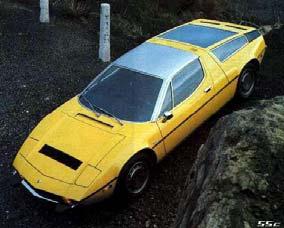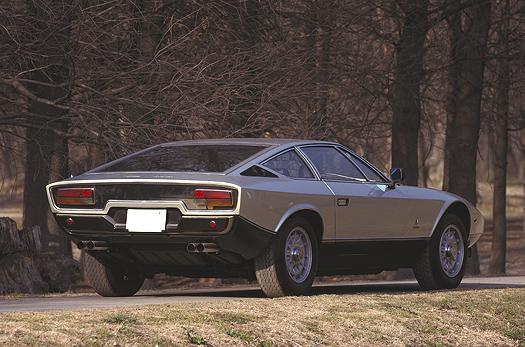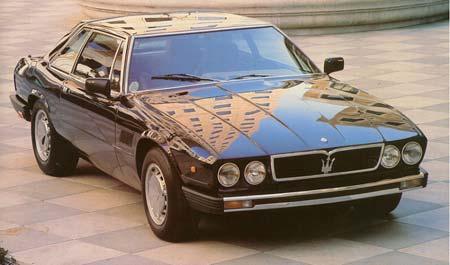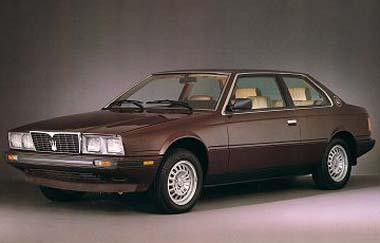
4 minute read
IntroductiontoMaserati Maserati Road Cars


Indy Bora
Years of production: 1969-1975
Numbers produced: 1104
Engine: 90°V8; 4.1L, 4.7L & 4.9L; 260, 290 & 300 hp
The MaseratiIndy, officially presented at the Geneva motorshowin 1969, was a tribute to the two consecutive victories of the Maserati8CTF race cars in the famous 500 miles race at the Indianapolis speedway in 1939 and 1940. This new car was designed by Vignale and could be seen as a model in between the Ghibliand the Mexico. The roof line was higher compared to the Ghibliin order to offer space for the rear passengers. Mechanicals were borrowed from the Ghibliand traditional Maserati: 90°V8 engine with four overhead camshafts, semi-monocoquestructure with front auxiliary frame, independent double wishbone front suspensions and a rigid rear axle with leaf springs. In 1973 the Indy adopted the brake system from Citroën, who was the new owner of Maserati.
Years of production: 1971-1978
Numbers produced: 530
Engine: 90°V8, 4.7L & 4.9L, 310 & 320 hp
The Bora was a milestone in Maserati’shistory: It was the first Maseratiroad car with a central mounted engine -engineer GuilioAlfieri gained much experience with the central enginedBirdcage Tipo63-65 race cars -and it was the first car which has been developed under full Citroën ownership. The engine was the well-known V8, first in 4.7L and later also in 4.9L configuration, while its beautiful fastback body was another masterpiece from GiorgettoGiugiaro. The Bora was equipped with Citroën’s complex hydraulic system, which was used for the brakes, the opening of the headlights, the adjustment for the driver’s seat and the pedals. Sales of the Bora suffered from the oil-crisis in the midseventies, while racing plans were crossed due to homologation problems.
IntroductiontoMaserati Maserati Road Cars
Merak, MerakSS & Merak2000
Years of production: 1972-1983
Numbers produced: 1820
Engine: 90°V6; 3.0L & 2.0L; 190, 208 & 170 hp

The Merakwas Maserati’sanswer to the oil crisis, which strongly penalised the sales of big-enginedcars. This small sister of the Bora used a modified version of the type C.114 engine, which Maseratihad produced for Citroën. This smaller engine made it possible to equip the Merakwith two small rear seats, while the Bora was a two seater. The Merak used even more Citroën components as its bigger sister, such as the single-spoke steering wheel; but much of these components disappeared again on later versions. In 1976, a lighter and more powerful version was presented, the MerakSS, while for the Italian market a two-litre version was offered. This latter version was recognisable by its black striping. The combination of its sensational Italdesignbody and more economic engine choice made from the Meraka real best-seller.
Khamsin
Years of production: 1974-1982
Numbers produced: 430
Engine: 90°V8, 4.9L, 320 hp
The Khamsinwas a remarkable vehicle, it was not only the last work of GiulioAlfieri as head of Maserati’sengineering department, it was also Maserati’sfirst series-production car to be designed by Bertone. The result was a streamlined, wedge-shaped car with elegant proportions. The mechanical base was still borrowed fromthe Ghibli, but now with independent rear suspensions, while brake system was a legacy from Citroën and not by everyone equally appreciated.
The Kamshin’straditional GranTurismoconfiguration –a big sports car with front mounted engine and rear wheel drive –indicated the end of an area which would only return in the late 1990’s.

QuattroporteII
Years of production: 1976-1978
Numbers produced: 12 Engine: 90°V6, 3.0L, 210 hp
The second generation of the Quattroporte conceals one of the obscurest periods in Maserati’shistory. The car has been developed under Citroën’s ownership and was technically identical to the Citroën SM, included its front wheel drive and hydro-pneumatic suspension. Performances were behind on the first generation Quattroporteand the car was unloved by Maseratipurists, but nevertheless the QuattroporteII was very comfortable, well equipped and offered an excellent ride. Its Bertone-designed body was modern and the build quality very good. Unfortunately, the earlyend of the agreement with Citroën in 1975 and financial problems hampered the launch of the QuattroporteII. In fact, the model has never been homologated for the European market. Only 12 units were produced in its three years of production and they were all soldto the Middle East.


Kyalami
Years of production: 1976-1983
Numbers produced: 200 Engine: 90°V8, 4.1L & 4.9L, 255 & 280 hp
The Kyalamiindicated at the same time the end and the beginning of an area. It was the last Maseraticoupe equipped with the illustrious V8 engine and it was the first that has been developed under the new ownership of Alejandro de Tomaso. The Kyalamiwas actually based on De Tomaso’sown Longchampmodel, but the Ford-Cleveland V8 has been removed in favour of Maserati’sown four-cam V8, and the original design from Tom Tjaardahas been elegantly reworked by Frua. Only 200 units were produced of this car that was named after the South African race track where the Maserati-enginedCooper Formula 1 cars scored an important win almost ten years earlier.
QuattroporteIII
Years of production: 1979-1990
Numbers produced: 2155
Engine: 90°V8; 4.1L & 4.9L; 255, 280 & 300 hp
The third generation of the Maseratiluxury saloon was meant to make up for the QuattroporteII fiasco. Alejandro de Tomaso, who disliked Citroën, discarded all Citroën technology used on the QuattroporteII. Mechanical parts came from the Kyalamiand the Quattroportehad again a V8 engine and rear wheel drive. The impressive bodyof the QuattroporteIII was designed by Giugiaroand the steel body shells were built at the Innocentiplant near Milan, prior to assembly in Modena. When the car went on sale in 1979, it was an instant commercial success. In 1987, a restyled version called QuattroporteRoyale offered an upgraded interior and a 20 hp more powerful 4.9L engine. Production of the QuattroporteIII continued until 1990.

Biturbo
Years of production: 1982-1989
Numbers produced: 11919
Engine: 90°V6 twin turbo 18v, 2.0L, 180-223 hp
When the Biturbowas presented in December 1981, a new area started for Maserati. Alejandro de Tomaso’splan to resolve Maserati’sfinancial problems was the introduction of a compact coupe with first level performances and an interesting price setting, and in this way attracting new customers to Maserati. Its engine was a modified version of the MerakV6 with the adoption of two small turbochargers, a world premiere. The Biturbo became a big commercial success thanks to its excellent performances and luxury interior, but first generation versions suffered from reliability problems. In 1983, the more powerful BiturboS was presented with twin intercoolers and two Nacaair ducts on the bonnet. In 1986 and 1987, both versions were upgraded with fuel injection (Biturboi and BiturboSi).










